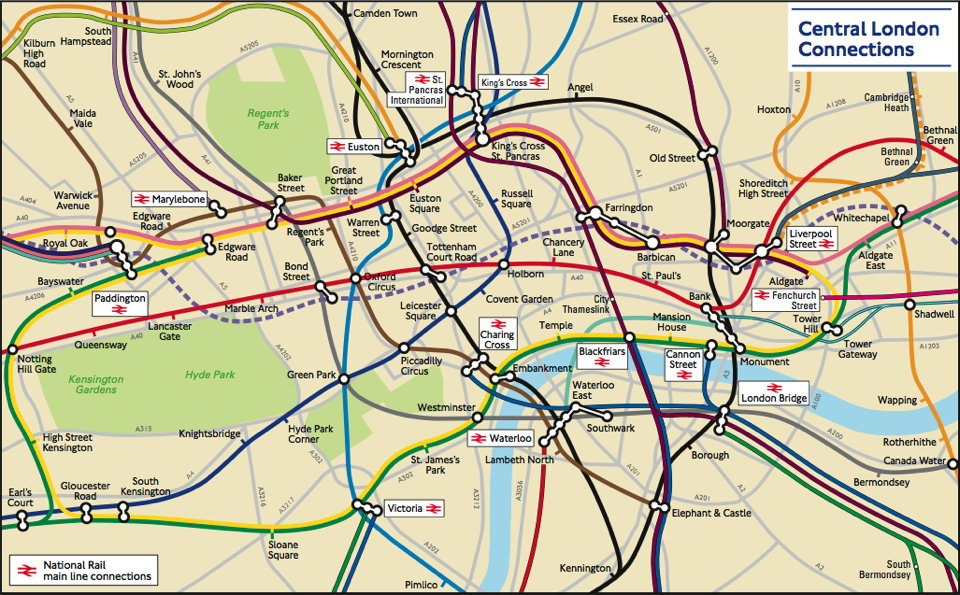 Blue Crow Media’s latest map of urban architecture is the London Underground Architecture and Design Map, a collaboration between transit system guru (and friend of The Map Room) Mark Ovenden and photographer Will Scott. “The guide includes a geographical Underground map with featured stations marked, with corresponding photography and details on the reverse along with tips for where to find unique and unusual signage, roundels, clocks, murals and more. The map is protected by a slipcover featuring a distinctive die cut roundel.” Costs £9. More at Mapping London.
Blue Crow Media’s latest map of urban architecture is the London Underground Architecture and Design Map, a collaboration between transit system guru (and friend of The Map Room) Mark Ovenden and photographer Will Scott. “The guide includes a geographical Underground map with featured stations marked, with corresponding photography and details on the reverse along with tips for where to find unique and unusual signage, roundels, clocks, murals and more. The map is protected by a slipcover featuring a distinctive die cut roundel.” Costs £9. More at Mapping London.
Previously: Architectural Maps of London.












